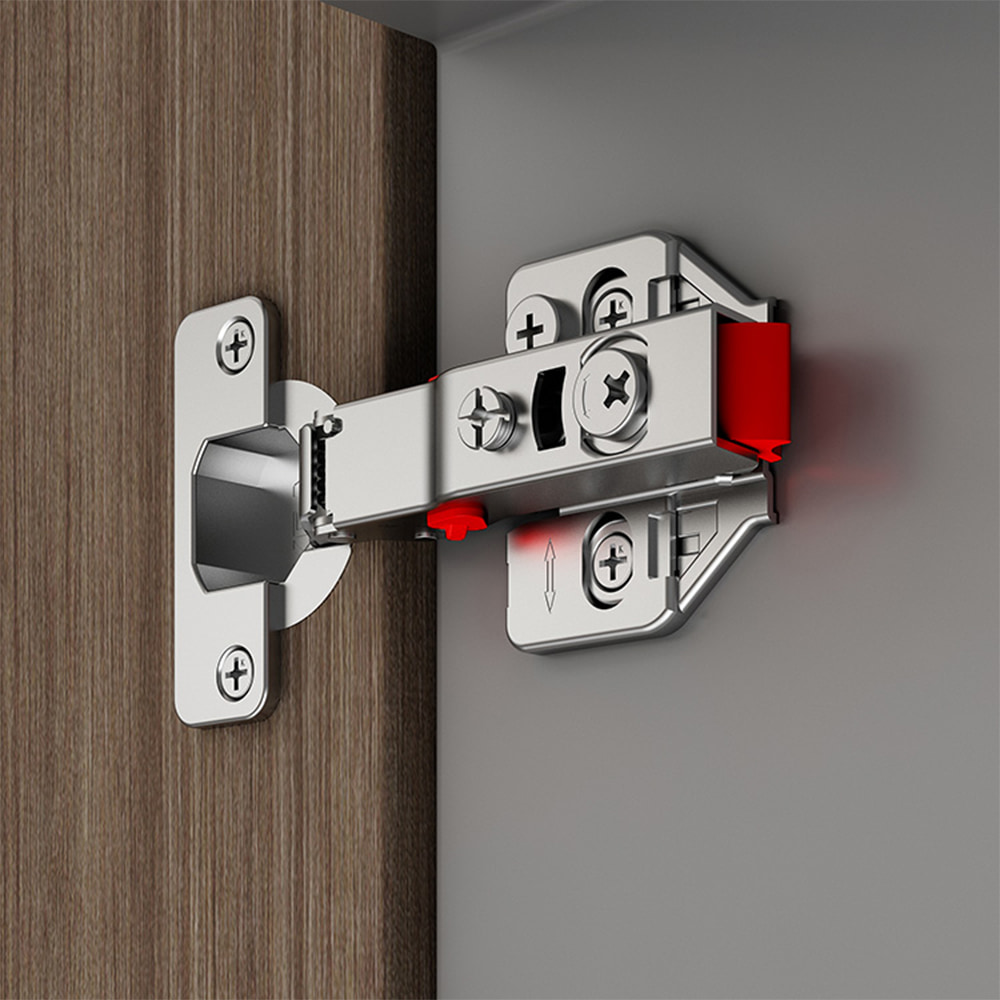Choosing the right cabinet door hinge is essential for both the functionality and aesthetics of your cabinets. With a variety of hinge types and styles available, selecting the best hinge for your cabinet doors can seem overwhelming. This guide will help you understand the different types of cabinet door hinges, their features, and how to choose the right one for your needs.
Types of Cabinet Door Hinges
1. Overlay Hinges: Overlay hinges are one of the most common types of hinges used for cabinet doors. They are designed to overlay the cabinet frame, allowing the door to cover the opening partially. Overlay hinges come in various degrees of overlay, such as full overlay, half overlay, and inset.
2. Concealed Hinges: Concealed hinges, also known as European hinges, are hidden from view when the cabinet door is closed. They offer a clean and modern look to cabinets. Concealed hinges are adjustable, allowing you to fine-tune the door's position for a perfect fit.
3. Butt Hinges: Butt hinges are traditional hinges that are visible when the cabinet door is closed. They are often used for cabinets with a more classic or rustic style. Butt hinges are available in various finishes and sizes to suit different cabinet door sizes and weights.
4. Barrel Hinges: Barrel hinges consist of two interlocking cylinders that rotate around a central pin. They are often used for small cabinet doors or doors with a decorative element. Barrel hinges can add a unique touch to your cabinets and are available in various finishes to match your cabinet hardware.
5. Piano Hinges: Piano hinges, also known as continuous hinges, are long, narrow hinges that run the entire length of the cabinet door. They provide added strength and support to heavy cabinet doors and are often used for pantry or utility cabinets.
6. Inset Hinges: Inset hinges are designed to fit inside the cabinet frame, allowing the cabinet door to be flush with the frame when closed. They are often used for cabinets with inset doors and provide a clean and seamless look.
7. Self-Closing Hinges: Self-closing hinges are designed to pull the cabinet door closed when it is within a few inches of the closed position. They are ideal for kitchen cabinets and other high-traffic areas where keeping the doors closed is essential.
8. Soft-Close Hinges: Soft-close hinges feature a mechanism that slows down the closing speed of the cabinet door, preventing it from slamming shut. They offer a quieter and more controlled closing motion, reducing wear and tear on the cabinet doors and frames.
Factors to Consider When Choosing Cabinet Door Hinges
1. Door Material and Weight: Consider the material and weight of your cabinet doors when choosing hinges. Heavier doors may require stronger hinges to support them properly.
2. Cabinet Style: The style of your cabinets will influence the type of hinge you choose. For modern cabinets, concealed hinges are often preferred, while traditional cabinets may suit butt hinges.
3. Overlay: Determine the amount of overlay you need for your cabinet doors. Full overlay hinges are used for doors that cover the entire cabinet frame, while partial overlay hinges are used for doors that cover only part of the frame.
4. Adjustability: Consider hinges that offer adjustability, especially for inset doors or cabinets with uneven surfaces. Adjustable hinges allow you to fine-tune the door's position for a perfect fit.
5. Finish: Choose hinges that complement your cabinet hardware and overall design aesthetic. Hinges are available in a variety of finishes, including chrome, brass, nickel, and bronze.
6. Functionality: Consider the functionality of the hinge, such as self-closing or soft-close features, based on your preferences and needs.
7. Budget: Set a budget for your cabinet hinges and choose options that offer the best value for your money.
Conclusion
Choosing the right cabinet door hinge is essential for ensuring the functionality and durability of your cabinets. Consider factors such as door material, cabinet style, overlay, adjustability, finish, functionality, and budget when selecting hinges for your cabinets. By understanding the different types of hinges and their features, you can make an informed decision that will enhance the appearance and functionality of your cabinets.
